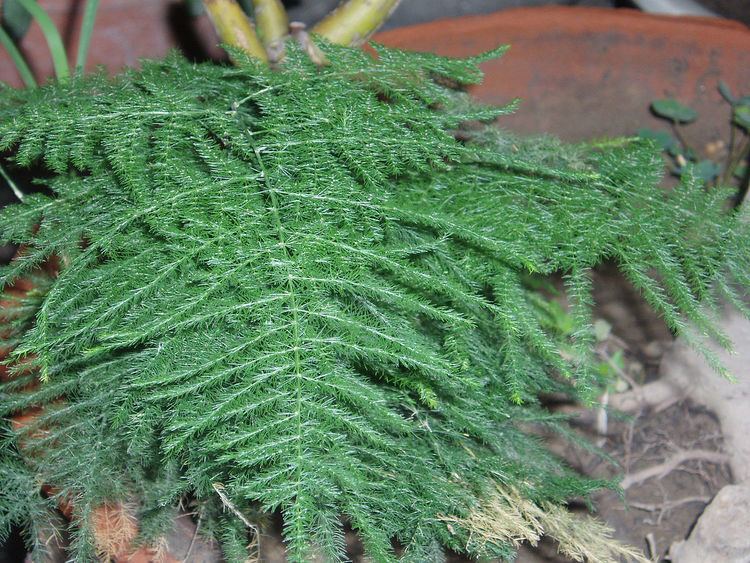Clade Monocots | Clade Angiosperms | |
 | ||
Asparagus is a genus of flowering plants in the family Asparagaceae, subfamily Asparagoideae. It comprises up to 300 species. Most are evergreen long-lived perennial plants growing from the understory as lianas, bushes or climbing plants. The best-known species is the edible Asparagus officinalis, commonly referred to as just asparagus. Some other members of the genus, such as Asparagus densiflorus, are grown as ornamental plants.
Contents
Ecology
The genus includes a variety of living forms, occurring from rainforest to semi-desert habitats; many are climbing plants. The differences among them came from the communities and ecosystems in which they occur, and the ecological and evolutionary processes that keep them functioning, yet ever changing and adapting. Most are dispersed by birds.
Ornamental species such as Asparagus plumosus, Asparagus aethiopicus, Asparagus setaceus, and Asparagus virgatus are finely branched and are misleadingly known as "asparagus fern".
In the Macaronesian Islands, several species (such as Asparagus umbellatus and Asparagus scoparius) grow in moist laurel forest habitat, and preserve the original form of a leafy vine. In the drier Mediterranean climate the asparagus genus evolved in the Tertiary into thorny, drought-adapted species.
Many species, particularly from Africa, were once included in separate genera such as Protasparagus and Myrsiphyllum. However, partly in response to the implications of the discovery of new species, those genera have been reunited under Asparagus. Species in this genus vary in their appearance, from unarmed herbs to wiry, woody climbers with formidable hooked spines that earn them vernacular names such as "cat thorn" and "wag 'n bietjie" (literally "wait a bit"). Most species have photosynthetic flattened stems, called phylloclades, instead of true leaves. Asparagus officinalis, Asparagus schoberioides, and Asparagus cochinchinensis are dioecious species, with male and female flowers on separate plants.
Selected species
As of September 2014, the World Checklist of Selected Plant Families accepts 212 species of Asparagus, including:
Pests and diseases
Invasive species
A. asparagoides, known as bridal creeper, is a problematic weed in southern Australia.
A. asparagoides, A. aethiopicus (under the name A. densiflorus) and A. scandens are listed on the New Zealand National Pest Plant Accord since they are invasive plants.
